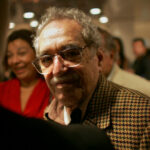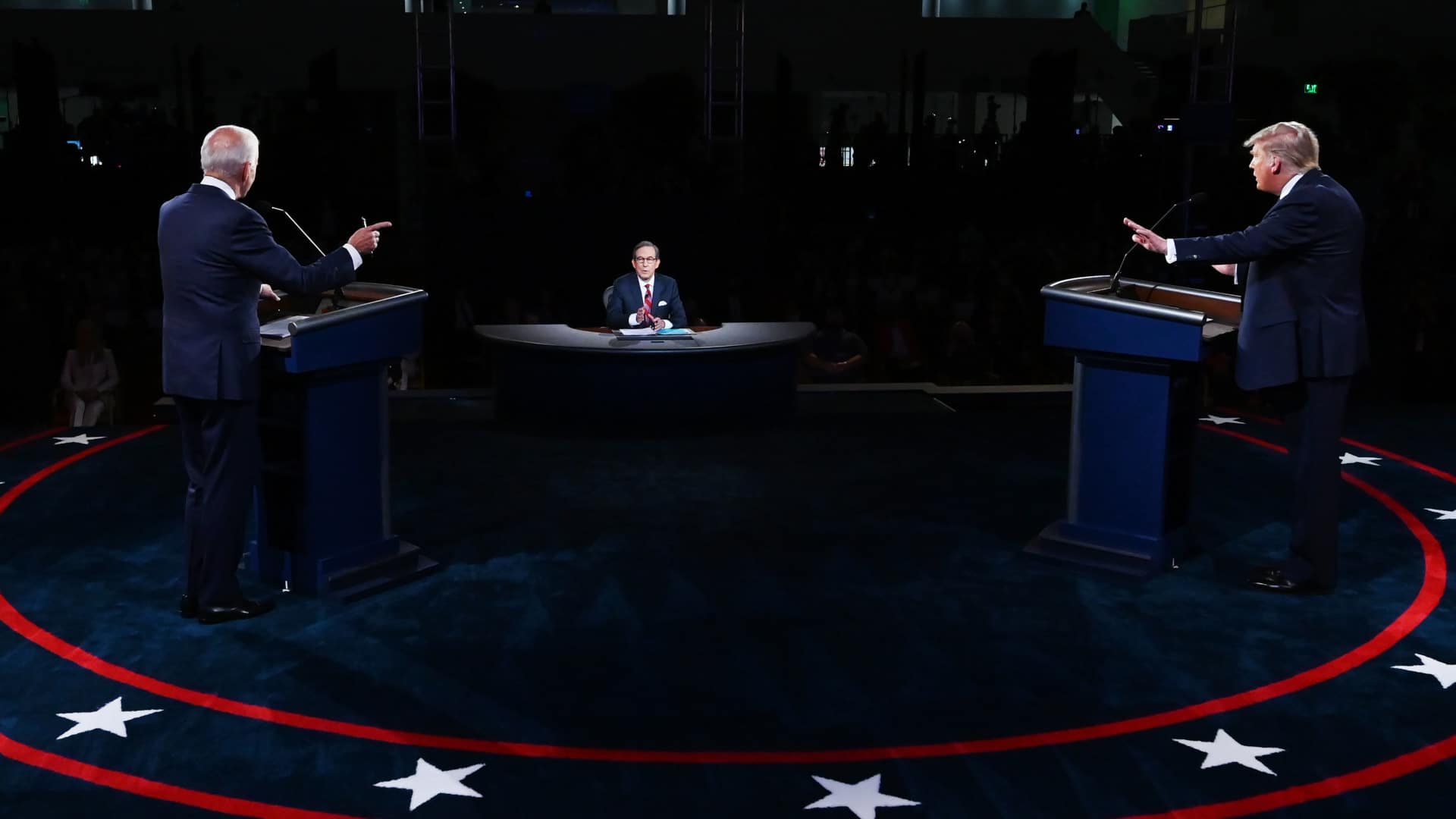After months of downplaying the severity of Covid-19 — and just hours after telling a virtual audience that “the end of the pandemic is in sight” — President Donald J. Trump announced early Friday morning that he and First Lady Melania Trump had tested positive for the coronavirus.
Trump, who was set to speak at a campaign rally in Florida on Friday and two in Wisconsin on Saturday, will quarantine in the White House, according to a letter from his physician, Sean Conley, announcing the positive test result. “The President and the First Lady are both well at this time,” Conley said in the letter, adding that he expects “the President to continue carrying out his duties without disruption while recovering.”
The news came shortly after one of the president’s senior advisers, Hope Hicks, tested positive for the virus.
On Thursday, shortly before receiving his diagnosis, Trump attended in-person fundraising events at his golf club in Bedminster, New Jersey, including a lengthy private meeting with more than a dozen supporters. On Friday morning, New Jersey contract tracers began asking attendees at the fundraiser to self-quarantine and seek testing. Joe Biden, who debated the president on Tuesday in Cleveland, Ohio, will also get tested Friday. The two remained distanced throughout the event, but fears of airborne transmission remain.
Trump is 74 years old and overweight, putting him at a higher-than-average risk of experiencing severe complications from Covid-19. Pinning down precise fatality rates for Covid-19 has been notoriously difficult, but recent estimates from the Centers for Disease Control and Prevention suggest that around 5 percent of people aged 70 and above who contract Covid-19 will die from the disease.
The majority of people infected with Covid-19 have only mild symptoms, or no symptoms at all. Other world leaders, including U.K. Prime Minister Boris Johnson, have contracted the virus and recovered.
Trump, a noted germaphobe, has in the past flouted the guidance of his own public health experts, often declining to wear a mask in public and holding large indoor and outdoor rallies. His claims to personal health and vigor, coupled with unfounded theories about the ill health of his opponents, have been important strategies in both of his presidential campaigns. In 2016, Trump eagerly fed conspiracy theories that Hillary Clinton was seriously ill, and he circulated a letter, written in 2015 by his personal physician, that described his health as “astonishingly excellent” and “extraordinary,” concluding that Trump would be “the healthiest individual ever elected to the presidency.” (The physician has since said that Trump dictated the note himself.)
The effects of Trump’s diagnosis on the U.S. coronavirus response, and on his reelection prospects, remain unclear. The announcement sent stock markets down, and led some analysts to predict that it would damage his campaign. The news could refocus attention on the continued risks of the pandemic, as fall approaches and fears of a new surge of infections grow — or, if Trump recovers quickly with few symptoms, become spun up into other narratives about the relative dangers of an unpredictable and still little-understood disease.
For now, the response from Trump’s presidential opponent has been measured. “We will continue to pray,” Biden’s campaign wrote on Twitter Friday morning, “for the health and safety of the president and his family.”
Also in the News:
• On Monday, ProPublica and The Arizona Republic reported that many Native American students continue to lack computer and internet access for remote learning during the Covid-19 pandemic, despite promises made by the federal government. Schools run by the Bureau of Indian Education (BIE) have resumed classes for the year, even though many of their students still lack the basic supplies necessary for remote learning. The BIE reportedly did not purchase the necessary equipment in time, partly due to officials’ initial insistence on in-person learning, and partly because of a nationwide shortage of computers caused by the sudden shift to remote classes. BIE’s education director said that the technology delays could potentially last into December for some students. The computer issue comes amid broader concerns about support for Native American tribes during the pandemic, which has highlighted longstanding problems in the Indian Health Service. (ProPublica and The Arizona Republic)
• Cases of Covid-19 are surging in Wisconsin, with hotspots moving away from Milwaukee and Madison and into the northeast region of the state. Both Green Bay and La Crosse, where President Trump was set to hold campaign rallies this weekend, have been designated “red zones” by the White House Coronavirus Task Force, signaling high levels of community spread. (Under pressure from city officials, on Thursday the Trump campaign moved the La Crosse rally to Janesville, where the rate of confirmed cases has been lower; both have now been canceled since the president tested positive for Covid-19). On Monday, Wisconsin’s Department of Health Services reported its highest single day increase of 2,817 new cases. While many residents in some parts of the state continue to eschew masks and brush off the pandemic as overblown, health care workers warn that hospitals are quickly nearing capacity. “I just wish [the community] could see how bad it’s getting,” one nurse told The Milwaukee Journal Sentinel. “We need to make a change now.” While earlier Covid-19 clusters had been linked to gatherings among college students, cases this week rose in all age groups except 18-to-24-year-olds, raising concern of a major outbreak just over a month before November’s presidential election. (Milwaukee Journal Sentinel)
• A plan by the French government to create a science and media network is raising red flags among the country’s science journalists, who worry the network will erode media independence. Billed as a means to counter misinformation and mistrust in science, the new center would “allow rapid contact between journalists and researchers, promote citizens’ access to reliable scientific information, and increase the contribution of scientific insights into public debates on major current topics.” Introduced as one of more than 300 provisions in the government’s 10-year science plan, the proposed center drew attention in a recent report by Le Monde, which likened it to national Science Media Centers that have been created in the U.K. and other countries. Citing those centers as examples, journalists at Le Monde and elsewhere have expressed concern that the network might serve primarily to spoon-feed quotes to journalist, set the tone and agenda of media coverage, and otherwise influence reporting. If it is based on the U.K. model, “we are rather hostile to this project,” Yves Sciama, president of the French Association of Science Journalists, told Science. The bill awaits debate in parliament but is expected to become law in the coming weeks. (Science)
• The trio of astronauts aboard the International Space Station (ISS) moved closer this week to pinpointing the location of a small but persistent air leak after a false alarm and some old-fashioned detective work. Late Monday evening, American Chris Cassidy and Russian cosmonauts Anatoly Ivanishin and Ivan Vagner of Roscomos were awakened by ground control to close hatches and perform tests after a cabin air pressure reading appear to show that a leak known to officials for several months had suddenly grown in size. NASA officials said they later determined the reading was caused by a temporary temperature change in the station. The crew this week closed and opened internal hatches of the station’s interlocking modules and used an ultrasonic leak detector to narrow in on the cylindrical transfer chamber of the Russian-built Zvezda Service Module as the culprit. NASA in blog updates stressed that the leak poses no immediate danger to the crew and is only a small increase from the expected leakage of air out of the pressurized station into the vacuum of space. Space station deputy program manager Kenny Todd told The Associated Press that as long as the leak does not get worse, the station should hold up through next spring. (CNN, The Associated Press)
• A report by scientists from the U.S. Geological Survey, warning that Alaska oil drilling plans could threaten vulnerable polar bear populations, has been shelved by the agency’s director for at least three months, according to a new report in The Washington Post. USGS director James Reilly, a Trump political appointee, has questioned both the research into the polar bear habitat and the need for the report, which is required as part of a federal clearance process to expand oil drilling in Alaska. According to the newspaper, which obtained a copy of the suppressed report, the research gathered by the agency suggests that much of the planned drilling would be centered in an area densely populated with polar bear dens, meaning young families of mothers and cubs would be affected. There are only 900 polar bears remaining in the southern Beaufort Sea population and nearly two-thirds reside in Alaska. While a USGS spokesman defended keeping the report secret as part of a routine review, one former official described the move as unprecedented. And environmentalists, who fear that the action fits into a pattern of efforts by the Trump administration to deny environmental impacts and accelerate fossil fuel development, reacted with anger: “Suppressing reports by career scientists,” one advocate in Alaska said, “is a dangerous way to make policy and a waste of American taxpayer money.” (The Washington Post)
• And finally: According to Louisville, Kentucky NPR affiliate WFPL, the Ohio-based coal executive Robert E. Murray and his companies routinely disputed claims by ailing coal miners seeking federally mandated benefits for black lung disease, a deadly illness officially called coal workers’ pneumoconiosis, or CWP. They also sued the Barack Obama administration to block measures aimed at curbing coal dust in mining operations. And after developing lung disease of his own, Murray told NPR last year that it was not a result of a lifetime in the coal business. Now, Murray is apparently seeking black lung benefits for himself. In a story published this week, WFPL detailed Murray’s appeal to the U.S. Department of Labor, which adjudicates requests for black lung benefits. Among other things, the process requires would-be claimants to identify a responsible party. Murray named North American Coal Corporation, where he worked for 30 years, including as its president. If an investigation determines that North American is responsible, it will have to pay Murray’s benefits. (A federally managed trust fund pays the benefits if no responsible party is identified.) Most coal companies and their insurers fight such obligations, however, meaning the Murray application could well see North American going to court to block the black lung claim of its former president, who described himself as “near death.” Reached by phone, Murray told WFPL he would sue the station if it reported on his past efforts to fight federal coal regulations and benefits. (WFPL, Louisville)
“Also in the News” items are compiled and written by Undark staff. Deborah Blum, Lucas Haugen, Jane Roberts, Frankie Schembri, Ashley Smart, and Tom Zeller Jr. contributed to this roundup.










